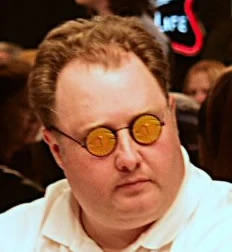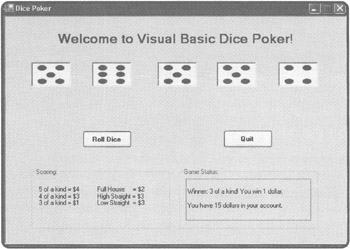Poker Dice Winning Hands
Poker dice, game involving five dice specially marked to simulate a playing-card deck’s top six cards (ace, king, queen, jack, 10, 9). The object is to throw a winning poker hand, with hands ranking as in poker except that five of a kind is high and there are no flushes. Some hands will only have two determining factors, like a straight. The first value would be a straight's spot in the rank of the poker hands (greater than 3 of a kind, less than a flush), and the second value would be the top card in the straight (7, jack, king, etc.).
Playing Dice
Poker Dice Winning Hands Wins
If you have not tried the table games at Vegas Tech properties, you are in for a pleasant surprise. The animations are smooth and completely believable. Poker Dice is played on a deep casino style dice table with the casino’s name inscribed on it. The version that we were playing had a convincing brick red felt, but other casinos have the game with green and blue felt, and other colors may be offered to keep with the particular casino’s theme. The sound design on this one is simple: The background is white casino noise accompanied by a peppy, ear-worm jazz theme that sticks with you hours after you have played. When winning combos are hit, an additional riff alerts players to it, and the winning combo is highlighted on the paytable, top center screen. The controls are arrayed across the bottom of the game, much in the manner of Vegas Tech card games, and are very easy to use and completely intuitive.Betting Dice
The player has the option of choosing the denomination of chip that he or she wants to play, ranging from $1 up to $100. One to five chips may be played per roll, and the more chips played, the bigger the bet, the higher the payoffs. Traditional Poker Dice is played against other players, and the winning hand takes the pot. In order to adapt it to online solo play, various hands have been assigned fixed payouts as are reflected in the paytable. Pegging the bottom of the payouts is two pair which gets the players bet back. The top end payout is 100 coins, and it is paid to five of a kind. We hit this within ten minutes of starting play on this game, and it made us really wish we had been risking $10 coins instead of $1!Winning Dice
We have never been players of bar dice. We hear them sometimes, slamming the cups down and muttering or cheering, but have never taken to it. This version of Poker Dice, however we found totally addictive. It looks awesome on the high-def screen, and the winnings flow back quickly. We recommend this game highly as an alternative to a night of straight slots. So log on to your favorite casino now, and roll the bones for real money and some exciting action! Poker Dice is a game not to be missed.
Intro
This is a problem concerning basic probability calculations from the text: “A First Course in Probability Theory” by Sheldon Ross (8th addition).

Programming Challenge - Poker Hands In Python
Sample Problem

Chapter 2 #16. Poker dice is played by simultaneously rolling 5 dice. Show that:
a) P[no two alike] = .0926, b) P[one pair] = .4630, c) P[two pair] = .2315, d) P[three alike] = .1543, e) P[full house] = .0386, f) P[four alike] = .0193, g) P[5 alike]=.0008.
Solution
Poker Dice Winning Hands Game
Notation, I will let ^ designate the power function. For example, 6^5 is 6 to the fifth power. 6! is 6 factorial, 6! = 6 * 5 * 4 * 3 * 2 * 1.
To calculate the Probabilities here, we will divide the number of occurrences for a particular event by the total possibilities in rolling 5 dice.
N[total] = total possibilities in rolling five dice = 6^5 = 7776
Note: N[total] is the number of ordered rolls. For example, if we rolled the dice one by one and rolled in order 3,4,5,6,2, it would be considered as different from if we rolled 2,3,4,5,6 in order.
a) P[no two alike]
There are 6 choices of numbers for the first dice. The 2nd dice must be one of the remaining 5 unchosen numbers, and the 3rd dice one of the 4 remaining unchosen numbers, and so on… This gives an ordered count, so:
N[no two alike] = 6 * 5 * 4 * 3 * 2 = 720
P[no two alike] = N[no two alike]/N[total] = 720/7776 = 0.09259259
b) P[one pair]
First we count the possible sets (unordered) of numbers. Here we have one number that is the pair, 6 choices. Then we must choose 3 different numbers from the remaining 5 values, as these three are equivalent, we have choose(5,3) = 5!/(3! * 2!) possibilities. So 6 * choose(5,3) is the total combinations of numbers. Since we are dealing with ordered counts, we must consider the orderings for each set of numbers. We have 5 die with 2 the same so the number of orderings is 5!/2!. Multiplying these together gives us the number of ordered samples:
N[one pair] = 6 * (5!/(3! * 2!)) * (5!/2) = 3600
P[one pair] = N[one pair]/N[total] = 0.462963
c) P[two pair]
Here we have 2 pairs which are equivalent, so we must choose 2 values from the 6 possible values, choose(6,2)= 6!/(2! * 4!). Then we must choose 1 value from the remaining 4 for the single value, 4 ways. Now we must consider the orderings, 5 die with 2 sets of 2 the same so the number of orderings is 5!/(2! * 2!).
N[two pairs] = (6!/(2! * 4!)) * 4 * (5!/(2! * 2!)) = 1800
P[two pairs] = N[two pairs]/N[total] = 0.2314815
d) P[three alike] (the remaining two cards are different)
There are 6 choices for the three of a kind. Then we must choose 2 different values from the remaining 5 choices, choose(5,2) = 5!/(2! * 3!). The number of orderings is 5 items with 3 being identical, which is 5!/3!.
N[three alike] = 6 * (5!/(3! * 2!)) * (5!/3!) = 1200
P[three alike] = N[three alike]/N[total] = 0.154321
e) P[full house] 3 alike with a pair.
We need one value for the three that are alike, 6 ways, and then we must choose from the remaining 5 values for the pair, 5 ways. The orderings are given by 5!/(3! * 2!).
N[full house] = 6 * 5 * (5!/(3! * 2!)) = 300
P[full house] = N[full house]/N[total] = 0.03858025
f) P[four alike]
We need one value for the four of a kind, and then one value from the remaining 5 for the last die. The number of orderings is given by 5!/4!.
N[four alike] = 6 * 5 * (5!/4!) = 150
P[four alike] = N[four alike]/N[total] = 0.01929012
g) P[five alike]
Here we need 1 value for the five alike, 6 ways. There is just 1 possible ordering as all five die are the same.
N[five alike] = 6
P[five alike] = N[five alike]/N[total] = 0.0007716049
Check: the numbers of each type must sum to N[total] = 7776:
720 + 3600 + 1800 + 1200 + 300 + 150 + 6 = 7776
Extra:
Straight
We can have two possible straights: one composed of (6,5,4,3,2) and one composed of (5,4,3,2,1). Each of these straights can be permuted 5! ways.
N[straight] = 2 * 5! = 240
P[straight] = N[straight]/N[total] = 0.0308642
Now let’s run a simulation in R:
Results of simulation:
notwoalike: 0.09194
onepair: 0.464
twopair: 0.23187
threealike: 0.1554
fullhouse: 0.03727
fouralike: 0.01889
fivealike: 0.00063
straight: 0.03072